LA GIOIA ASCONA ARTHOUSE ARTISTS
Michael Sazarin
ARTHOUSE ARTIST MICHAEL SAZARIN
When the gaze is lost, the magic begins
Michael Sazarin’s painting is based on absolute freedom. His paintings reflect unfulfilled longing.
The artist finds the superficial and already known inexpressive: “Something only becomes an adventure if you don’t know its outcome beforehand.” In this sense, the painter allows each viewer to be reflected individually in his works and thereby discover what he himself carries deep within himself.
Sazarin’s painting shows no ready-made solutions – on the contrary: it poses riddles. His images are free like music, which has already overwhelmed the human mind while it is still searching for terms to describe it.
Sazarin’s approach is based on the absence of any concept:
he just paints away without thinking anything of it. During the process of painting, structures emerge that surprise him again and again. Thus the artist loses himself in colours, forms and surfaces that seem to arise by chance. The artist repeatedly stresses that he does not paint, but that the picture “paints itself”. As a result, Sazarin does not attribute any sort of meaning to his pictures and says that ultimately each observer is reflected in his pictures: everyone sees something that is inside themselves.
Sazarin incorporates chance to guide him. As well as being his most important assistant, chance also supplies advice, impulse and vision. The image is as free as the music and has already smothered the head before it gathers words.
Big Bang and silence fortunately leave little room for mediocrity. Opposites are clearly identified and not blurred in a half-hearted fashion. The Hamburg-based artist Michael Sazarin lives and works like this: powerful curves, bright colours, broken surfaces and shadowy figures characterise his works.
The artist Michael Sarasin shuns the academic approach to painting: most of his work is all about immediacy, spontaneity and direct impact. When Sazarin talks about art, he is interested not so much in theoretical concepts, but more in what the picture itself is trying to achieve.
Animals, children and angels: these are far more important to him than his role as an “artist”.
Anyone who paints is not aware of the fact that the painting, as they are losing themselves in the picture. As far as Sazarin is concerned, “losing oneself” is the start of the real creative process. He likes to talk about fortunate failures, destructive construction or the falling fly. Only when the image escapes from the artist, and so becomes autonomous, can chance be controlled so that surfaces become magical. In Sazarin’s view, one of the most beautiful qualities of a picture is its insatiability – when you simply cannot take your eyes off it.

MICHAEL SAZARIN
Résumé
1943 born in Danzig
1945 moved to Hamburg
1962–69 lived in the USA
1969 studied literature and art history / painting
1971 started painting
1981 member of the BBK Hamburg. Moved into a studio in the Haus für Kunst und Kunsthandwerk / Hamburg
2019 pictures now exclusively available from La Gioia Ascona Arthouse
MICHAEL SAZARIN
Exhibitions
Shanghai Art Fair, China // Art Beijing, China // Art Madrid, Spain // Galerie Puncto, Vienna // German embassy in the Vatican City // Grace Denker Gallery – Urknall und Stille, Hamburg // Artgeschoss Wolfenbüttel // Nordart – Kunstwerk Carlshütte // Galerie auf Zeit, Wismar // Museum ship “Cap San Diego”, Hamburg port // Galerie Anne Moerchen, Hamburg // Berliner Liste 2008, Berlin (Galerie Anne Moerchen) // Galerie Anne Moerchen, Hamburg // Projekthaus Altona, Hamburg // Galerie Curare, Hamburg // St. Jacobi Kirche (Südschiff), Hamburg // Katholische Akademie, Hamburg // Changing exhibitions in own studio // Ernst-Deutsch-Theater, for the staging of “Montserrat” // Galerie Bollhagen, Worpswede // Galerie Metzner, Hamburg // Galerie L., Hamburg // Kunsthaus, Hamburg // The Lion King, Hamburg
Sazarin’s works are currently being shown exclusively at La Gioia Ascona Arthouse. Viewings can be arranged by contacting the La Gioia Ascona Arthouse.

MICHAEL SAZARIN
Showroom
Discover our limited outdoor art prints as a cost-effective alternative to
our unique paintings.Contact us for your desired format and
for more pricing information.
-

22 | Circe
13'200,00 CHFincl. VAT
zzgl. Versandkosten
Add to cart -

23 | Demeter
10'800,00 CHFincl. VAT
zzgl. Versandkosten
Add to cart -

24 | flowers still life
8'400,00 CHFincl. VAT
zzgl. Versandkosten
Add to cart -

25 | Flowers Diptych I
Read more -

26 | Flowers Diptych I I
Read more -
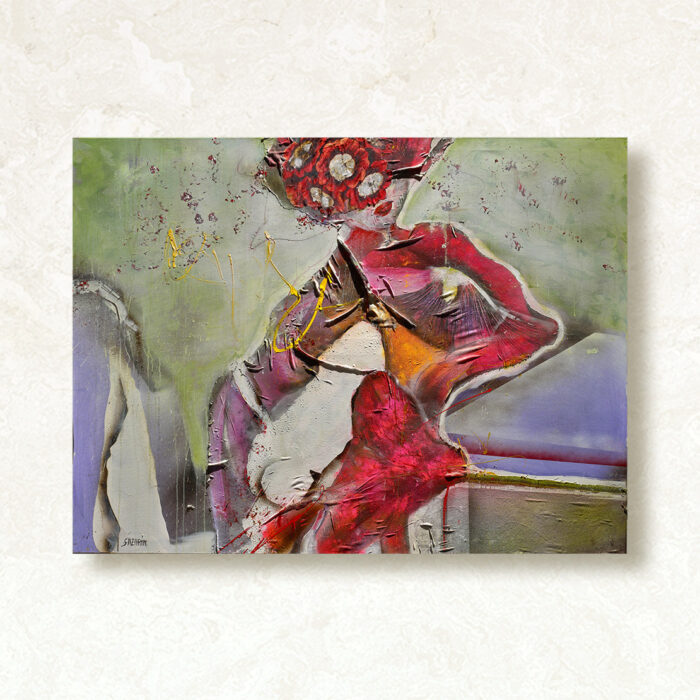
27 | Lolita
Read more -

28 | Freshman
10'800,00 CHFincl. VAT
zzgl. Versandkosten
Add to cart -

29 | Even fresher
4'800,00 CHFincl. VAT
zzgl. Versandkosten
Add to cart -

21 | fire dance replica
6'700,00 CHFincl. VAT
zzgl. Versandkosten
Add to cart -

20 | ballet
9'900,00 CHFincl. VAT
zzgl. Versandkosten
Add to cart -

19 | Royal Ascot blue
10'500,00 CHFincl. VAT
zzgl. Versandkosten
Add to cart -

18 | Royal Ascot
10'800,00 CHFincl. VAT
zzgl. Versandkosten
Add to cart -

17 | Ariadne (price on request)
Read more -

16 | Le Bouquet
7'000,00 CHFincl. VAT
zzgl. Versandkosten
Add to cart -

15 | A rose is a rose
10'500,00 CHFincl. VAT
zzgl. Versandkosten
Add to cart -

14 | Grace
7'500,00 CHFincl. VAT
zzgl. Versandkosten
Add to cart -

13 | Couverture
3'800,00 CHFincl. VAT
zzgl. Versandkosten
Add to cart -

12 | Good vibes
4'000,00 CHFincl. VAT
zzgl. Versandkosten
Add to cart -

11 | Les Fleures Bleues
12'700,00 CHFincl. VAT
zzgl. Versandkosten
Add to cart -

10 | Credo
14'600,00 CHFincl. VAT
zzgl. Versandkosten
Add to cart -

09 | Une belle Controverse
13'000,00 CHFincl. VAT
zzgl. Versandkosten
Add to cart -
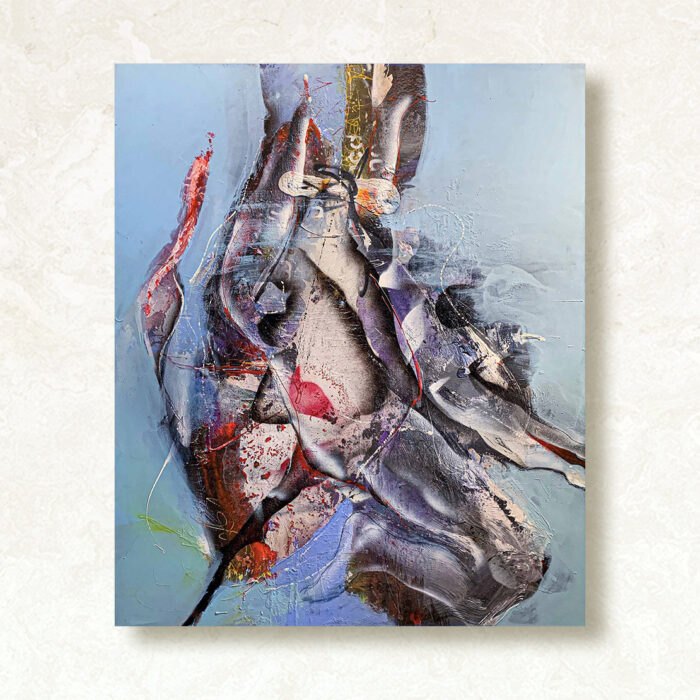
08 | Down on my knees
13'300,00 CHFincl. VAT
zzgl. Versandkosten
Add to cart -

07 | Ring corner
14'100,00 CHFincl. VAT
zzgl. Versandkosten
Add to cart -

06 | Icarus (price on request)
Read more -

05 | Irma la Douce
6'200,00 CHFincl. VAT
zzgl. Versandkosten
Add to cart -

04 | On The Rocks
7'400,00 CHFincl. VAT
zzgl. Versandkosten
Add to cart -
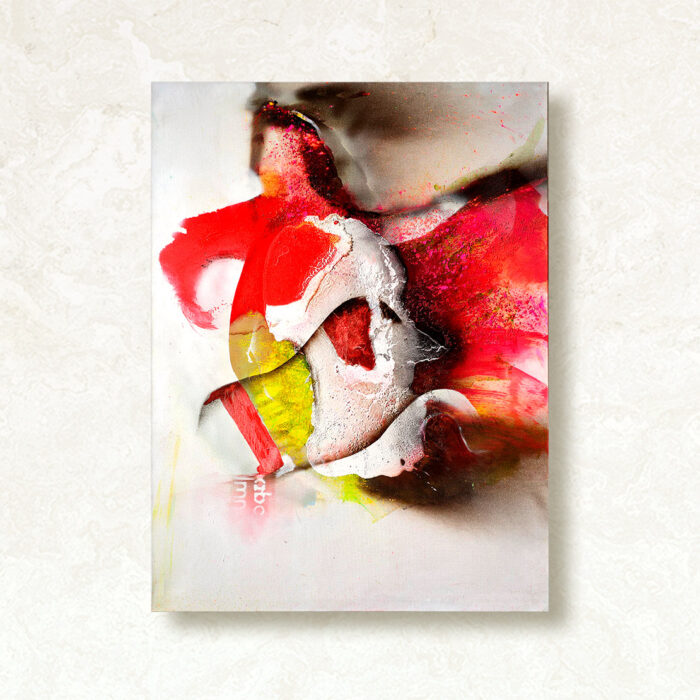
03 | Only The Best (price on request)
Read more -
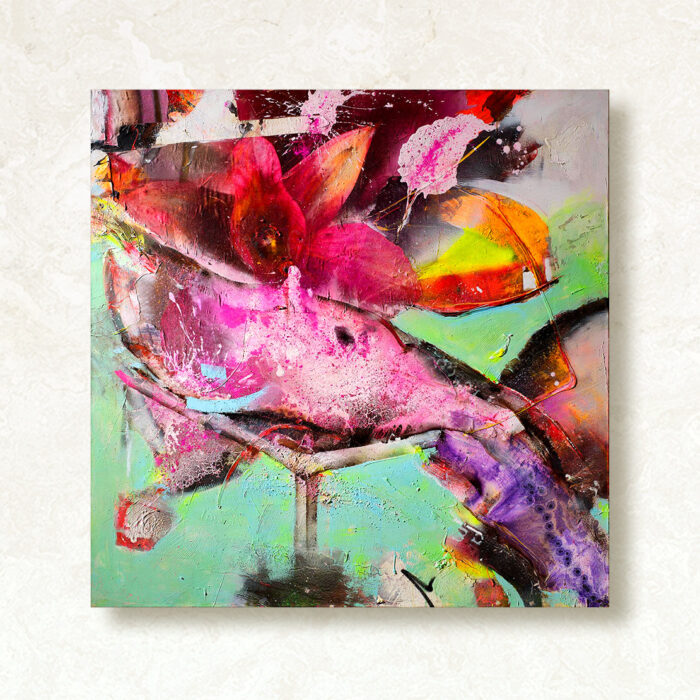
02 | Fleur du Mal (price on request)
Read more -
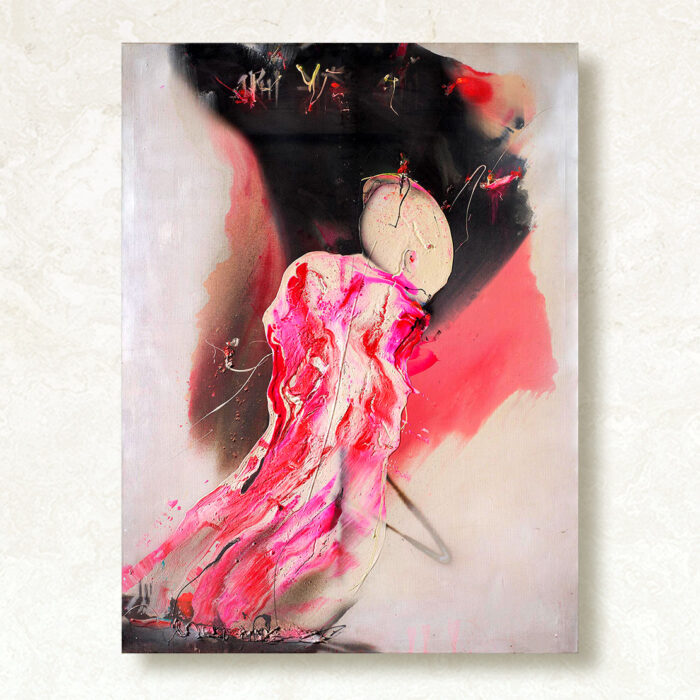
01 | Lao Tzu
17'000,00 CHFincl. VAT
zzgl. Versandkosten
Add to cart -

Tannenberg “Verkauft”
Read more -

Phoenix “Verkauft”
Read more -
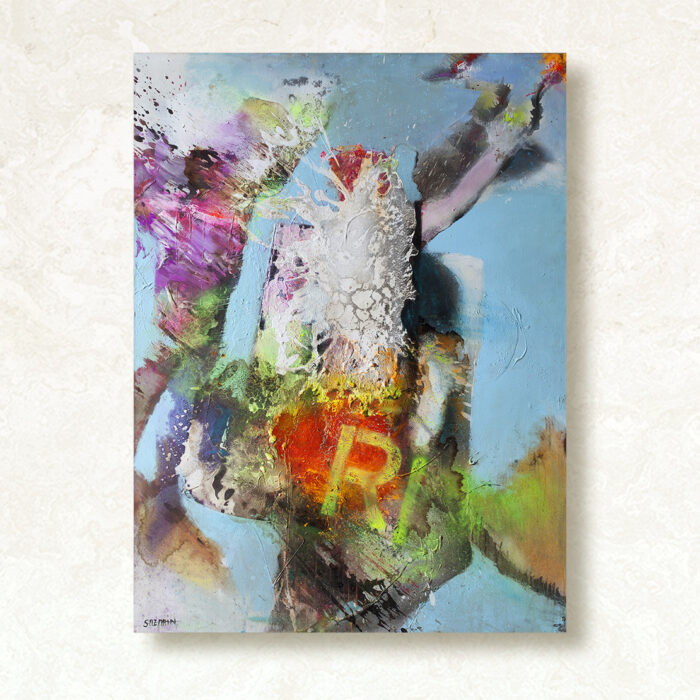
Final “Sold
Read more -

Too sweet “Sold
Read more -

Summertime “Sold
Read more -

Floral “Sold
Read more -
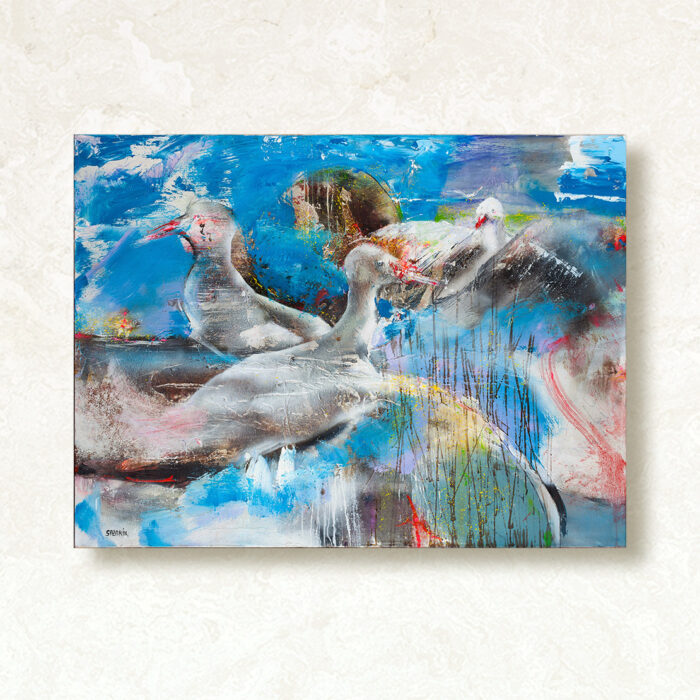
Seagulls “Sold
Read more -

Garden show “Sold
Read more -

Rocket flower “Sold
Read more -

Flying saucer “Sold
Read more -
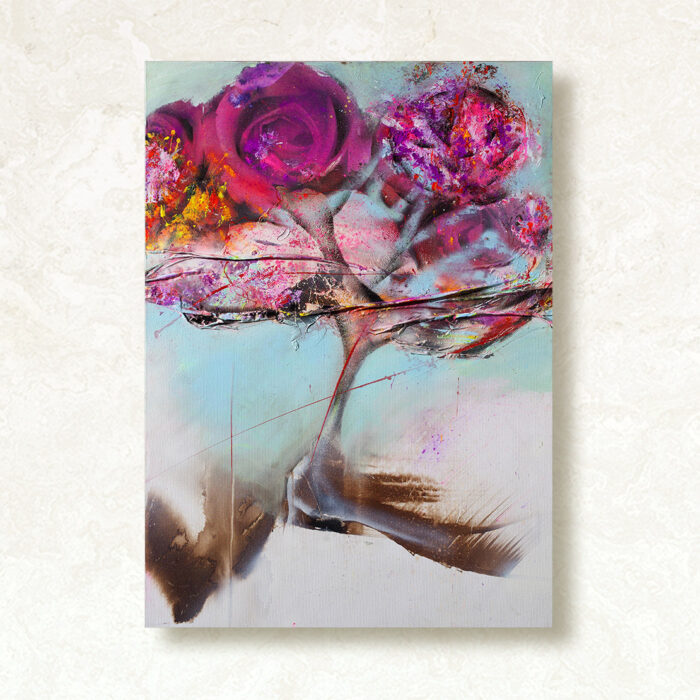
L’arbre a fleurs “Sold
Read more -

Josephine “Sold
Read more -

Peace dove “Sold
Read more -

Over the top “Sold
Read more -
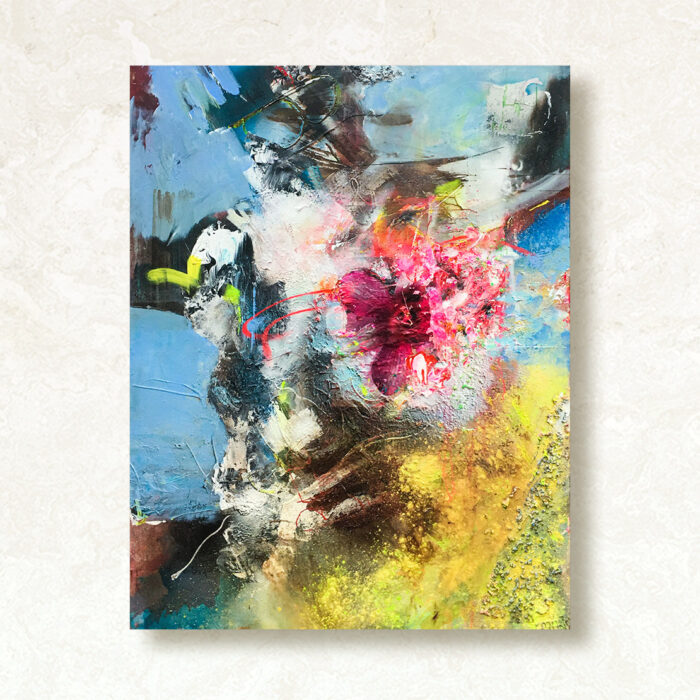
Wonderwork “Sold
Read more -

La fleur purple “Sold
Read more -
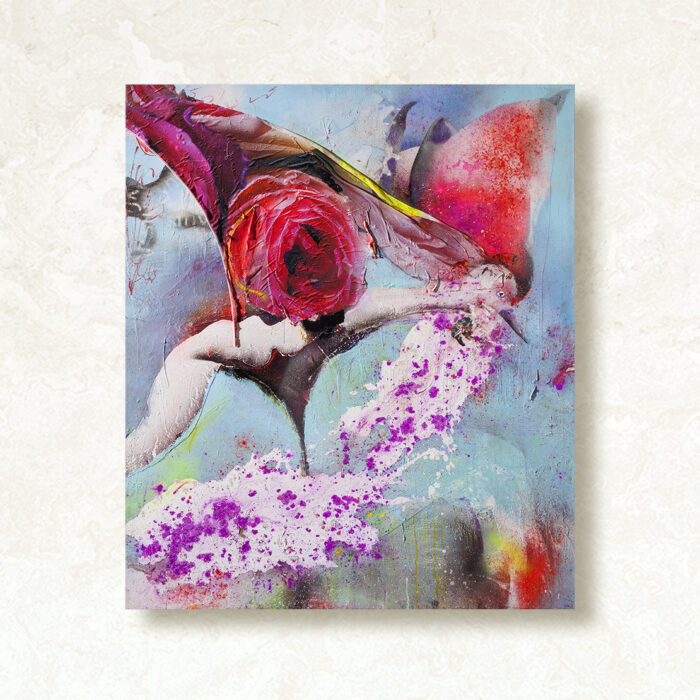
Bird of Paradise “Sold
Read more -
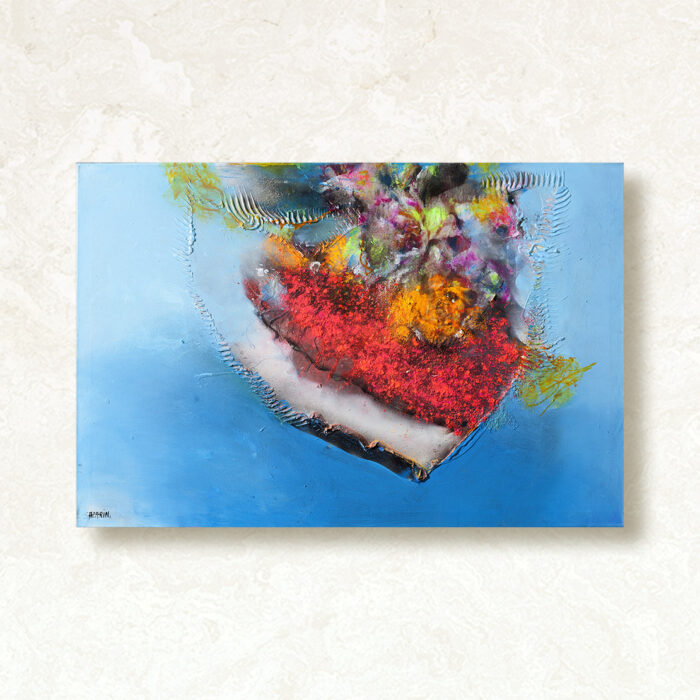
Garden splendor “Sold
Read more -

Fresh-fresh “Sold
Read more -
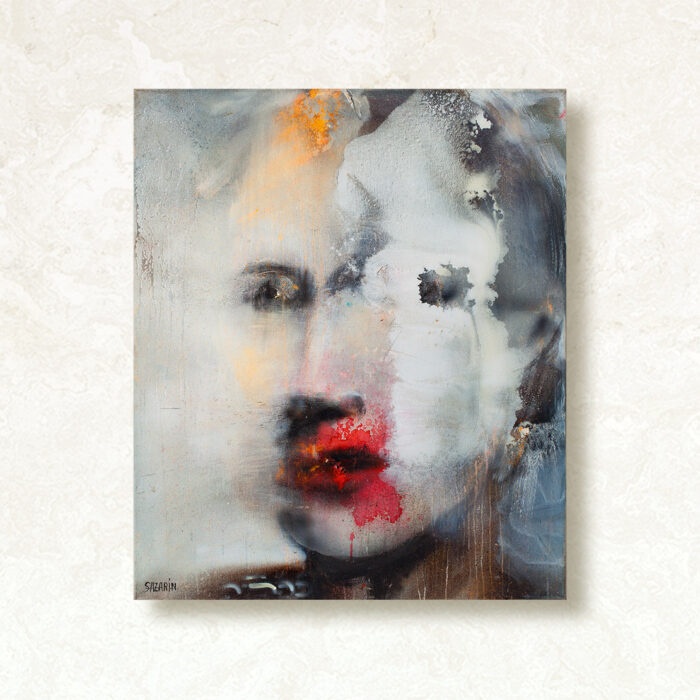
Perplexed “Sold
Read more
There is no beauty in itself. Beauty arises only in the friction of contrasts, which are melted in the confrontation to form a composition.
The studio as a place for smelting or forging – for Sazarin, it is chiefly a workshop where work is done. And, in his opinion, the real artist is characterised by diligence. As far as Sazarin is concerned, skill is a key component of ability, and luck plays its part in success, but hard work is the real foundation.
In his late work he has found a simplicity which at the same time allows an emancipated interplay of colours. The simplest thing, which has nothing in common with the naïve, is shown above all in the generosity of white surfaces and the all the more concentrated culmination of colour events. By “emancipated”, Sazarin understands above all allowing any colour at all once it has found its direct placement. Work such as “No” or “Silent” display an almost Asian character, which has more in common with Chinese ink painting or Japanese Zen drawings than with European painting.
Just as the silence of his studio in Hamburg city centre is music to the artist’s ears, so too the “white silence” music behind colour explosions such as “Wave I” or “Chinese Landscape”.
The characteristic thread running through Sazarin’s work is what he likes to call “unwillingness”, because only in overcoming the “painter’s ego” (analogous to Gottfried Benn’s lyrical ego) does he manage to achieve artistic freedom. What originally happened as a creative accident was later “worked up” into an aesthetic concept. While Sazarin was finishing off a drawing in 1978, he accidentally upset his coffee pot over the picture, producing an image with totally new structures. “That’s when I learned for the first time to really see: I was bowled over looking at the scenic structures which were both blurred and clear at the same time, and which I had no intention of making.
The picture was not only improved, it was one of my early fortunate failures.” Sazarin then began to gradually incorporate and control this random element in his work. As well as being his most important assistant, chance also supplied advice, impulse and vision.
Some of the most important influences on Sazarin’s aesthetic understanding comes from Japanese Zen philosophy and the Taoism of Lao-Tse. Sazarin sees thought and speech simply as an intellectual tool and support. The image is as free as the music and has already smothered the head before it gathers words. Sazarin has always been fascinated by the suddenness of the moment (the impression) that a picture can evoke in the viewer. Such suddenness (impact) paired with an impulsive force in the vernacular is characteristic of almost all his pictures. Sazarin’s style of painting happens in the moment, without any before or after. In this creative moment, the canvas responds itself as it is shaken, sprayed, dispersed, painted, or glued… and in many other ways.
Sazarin’s work includes paintings, drawings, etchings, rust and material works. Coming from figurative drawing, Sazarin freed himself over the years more and more “from the recognisable figurativeness” and became increasingly abstract. In many of his works, landscapes, bodies, and portraits are only hinted at, because the artist is not interested in directly reproducing something that has been recognised, but in “turning solutions into riddles”. The preference to create spaces and symmetries from surfaces allows his pictures to be turned through 360 degrees. The picture is not compromised in any way through rotation. On the contrary: the viewer’s gaze gains new perspectives and explores unfamiliar landscapes, so that a picture can contain several other motifs and layers. This “polyperspectivity” is one of the main features of Sazarin’s art.
(Only in German version) Ich will so wenig wie möglich von außen in das Bild hineintragen. Mich interessiert das Spontane, der schnelle Impuls. Am liebsten reagiere ich auf Strukturen. Sie dienen als Anhaltspunkte, entlang derer ich mich intuitiv und imaginativ in eine fremde, mich selbst überraschende Bildwelt hineinmale. Wo der Blick stürzt, sich verliert, wo es weder ein Oben oder Unten noch einen Anfang oder ein Ende gibt und alles variabel scheint, da beginnt die Magie. Wo es nichts mehr ist und dennoch etwas darstellt, nichts von außen Abgebildetes, sondern etwas, das sich aus sich heraus selbst trägt: Das ist das Niemandsland der unverbrauchten, unersättlichen Bilder.
Ich möchte unverbrauchte Bildereignisse schaffen. Sie sollen überraschen, dabei prinzipiell unendlich sein. Meine neuen Bilder werden mir selbst immer ähnlicher. Sie zeigen von weniger immer mehr und folgen einer Orientierung hin zu letzten Freiheiten in mir selbst … gelegentlich über Umwege der Verwirrung und des Nicht-weiter-Wissens. Der Rhythmus der Schläge eines Bildes wird angesichts vermeintlicher Ohnmacht immer locker. Er löst sich zunehmend von Logik und vorhersehbarem Wollen. Spontanen Fluten folgend, treibe ich uferlos einem so nicht erneut nachbildbaren Motiv zu. Dieser freie Flow strömt fiebrig in vulkanischen Strömen der Apotheose über mich. Die Stunde des Gebets. Ein besonders gelungenes Bild weiß vom Bilde nichts. Dennoch und gerade deshalb, weil es quasi ein Bild “von nichts” ist, ähnelt es am ehesten wohl dem jenigen, dem Künstler, der ohne konsequenten Willen und damit gewissermaßen außerhalb seines Bewusstseins etwas erschafft. Dabei möchte er das Unmögliche schaffen und dem Nichts Ähnlichkeit verleihen. Als Kern des eigenen Könnens, begreift er das gebilligte Misslingen, die bei maximaler Missachtung des eigenen Egos immer wieder neu ergriffene Chance, die wagemutige Aufgabe des Selbstmalen-Wollens. Umgehen des Egos führt bewusst zum freien Fall, zur inneren Freigabe, zum Geschehen-lassen. Der Wille geht in dem Moment über Board, wo du nichts mehr entscheidest, sondern aufgibst und das Steuern loslässt, damit sich der Weg von selbst finden kann. In solchen Momenten bist du frei … frei von dir selbst, diesemunsäglichen Wollen. Der Prozess ist ein unmittelbarer, eindeutiger und vollkommender Verzicht auf den eigenen Willen. Das Werk entsteht aus sich selbst heraus, folgt keinem Willensakt, sondern findet nur den richtigen Zeitpunkt seiner Materialisierung, geleitet höchstens durch das Empfinden seiner inneren Stimme. Zu maximalen Höhen gelangst du über das unermüdliche zu-Grabe-Tragen deines Selbst.
Beim selbstbestimmten Sehen, hat der Betrachter die möglichkeit, sein inneres bild zu sich selbst vordringen zu lassen. Das setzt eine intensive subjektive Verbundenheit voraus. Der Rest bleibt am besten wolkig, unausgesprochen – und damit offen. Erahnten liegt ein besonders hoher Wert. Ich möchte aus Lösungen Rätsel malen, lasse alles zu, biete alles, bestätige nichts. Meine Arbeiten sind ungegenständlich und dennoch konkret. Sie sehen nicht etwa aus wie etwas, sondern sie sind etwas! Dabei unterscheide ich zwei Arten von Bildern: gute und solche, die gut bleiben. Jedes meiner Bilder ließe sich durch Übermalung in eine noch höhere Sphäre überführen. Ich werde die Welt daher mit immer weiteren, mit immer besseren Geißeln strafen.
WORLD
Michael Sazarin “Big Bang and Silence“
> Link
Brigitte Woman
Only the love is missing
> Link
Art magazine writes:
“The Hamburg painter Michael Sazarin is interested in hunches, not certainties. He lives out the tension between random states and recognisable structures with relish. Together with Sazarin’s preference for large formats, his works exert an astonishing pull on the viewer.”

